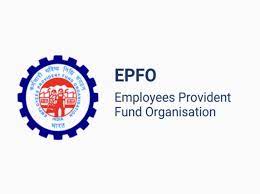PF Contribution Percentage: Building a Secure Future
Provident Fund (PF) contributions play a crucial role in securing a stable financial future. Understanding and maximizing the PF contribution percentage is essential for individuals looking to build a strong financial foundation. In this comprehensive guide, we will explore the various aspects of PF contributions and provide strategies to optimize your contribution percentage. To ensure a well-structured guide, we will follow the MECE (Mutually Exclusive, Collectively Exhaustive) framework.
PF Contributions

What is PF?
PF, also known as Provident Fund, is a retirement savings scheme established by the government to help employees accumulate funds for their post-retirement years. It is a mandatory contribution deducted from an employee’s salary, with both the employee and employer making contributions toward the PF account.
Legal Requirements for PF Contributions
Employers and employees have legal obligations regarding PF contributions. As per the law, a minimum percentage of an employee’s salary must be contributed towards PF. The exact percentage may vary based on government regulations and revisions. Both employers and employees must understand and comply with these legal requirements.
Benefits of PF Contributions
Contributing to PF offers several benefits for individuals planning for a secure financial future. Firstly, PF contributions help in building a retirement corpus, ensuring financial stability during the post-retirement years. Additionally, PF contributions offer tax benefits, reducing the overall tax liability. Moreover, the compounding effect of PF contributions over time can significantly increase the accumulated funds, providing a substantial financial cushion.
Factors Affecting PF Contribution Percentage
Employee’s Basic Salary
The employee’s basic salary plays a crucial role in determining the PF contribution percentage. The percentage is calculated based on the basic salary, subject to certain minimum and maximum limits set by the government. Employees need to understand how their basic salary impacts their PF contributions to effectively plan for their financial future.
Employer’s Contribution Policy
The employer’s contribution policy also affects the overall PF contribution percentage. While the minimum contribution percentage is mandated by law, some employers may choose to contribute more than the mandatory percentage. This can have a positive impact on the employee’s PF accumulation and should be considered while evaluating different employment opportunities.
Voluntary Contributions
Employees have the option to make voluntary contributions towards their PF account, over and above the mandatory contributions. These voluntary contributions can increase the overall PF contribution percentage, helping individuals build a larger retirement corpus. Employees need to understand the benefits of voluntary contributions and consider them as part of their financial planning.
Government Regulations and Revisions
Government regulations and revisions can impact the PF contribution percentage. Employees need to stay updated with any changes in the PF contribution rules. Recent changes in PF contribution rules, if applicable, should be carefully understood to ensure compliance and to make necessary adjustments to contribution percentages.
Impact of Salary Structure
The salary structure, including allowances and deductions, can also influence the PF contribution percentage. Employees should be aware of how different components of their salary affect their PF contributions. Understanding the calculation method for PF contributions based on the salary structure can help individuals make informed decisions to maximize their contribution percentage.
Strategies to Maximize PF Contribution Percentage
Negotiating Salary Structure
When negotiating a salary structure, it is important to consider the impact on PF contributions. By strategically negotiating a higher basic salary, employees can increase their PF contribution percentage. It is essential to highlight the long-term benefits of higher PF contributions during salary negotiations.
Optimal Utilization of Tax Benefits
Maximizing PF contributions can also lead to optimal utilization of tax benefits. Employees should understand the tax benefits associated with PF contributions and explore other tax-saving investment options that complement PF contributions. By effectively utilizing tax benefits, individuals can reduce their overall tax liability and maximize their PF contribution percentage.
Understanding Salary Components
Understanding the various components of your salary is crucial for maximizing the PF contribution percentage. Different salary components, such as basic salary, allowances, and deductions, can impact the PF contribution calculation. By analyzing and restructuring salary components, individuals can optimize their PF contributions and increase their contribution percentage.
Leveraging Voluntary Contributions
Voluntary contributions provide an opportunity to further enhance the PF contribution percentage. By making additional voluntary contributions to the PF account, individuals can accelerate the growth of their retirement corpus. It is important to assess personal financial goals and capacity before opting for voluntary contributions.
FAQs
Below are some frequently asked questions related to PF contribution percentage:
What are the eligibility criteria for PF contributions?
Answer: Eligibility for PF contributions depends on factors such as employment type, organization size, and salary threshold. Generally, employees earning a certain minimum salary are eligible for PF contributions.
Can I withdraw my PF contributions before retirement?
Answer: Yes, individuals can withdraw their PF contributions under certain circumstances, such as medical emergencies, education expenses, or purchasing a house. However, early withdrawals may have tax implications and can impact the long-term growth of the retirement corpus.
How does PF contribution affect gratuity?
Answer: PF contributions do not directly impact gratuity. Gratuity is a separate benefit provided by employers as a lump sum payment to employees upon retirement or resignation. However, the basic salary used to calculate gratuity may include the PF contribution amount.
What are the employer’s obligations regarding PF contributions?
Answer: Employers have a legal obligation to deduct the employee’s share of PF contribution from their salary and contribute it to the PF account. They must also contribute their share of PF as per the mandated percentage. Employers are responsible for ensuring timely and accurate PF contributions.
Conclusion
Maximizing your PF contribution percentage is a crucial step toward building a secure financial future. By understanding the various factors that affect the contribution percentage and implementing effective strategies, individuals can optimize their PF contributions. It is important to stay updated with government regulations, negotiate salary structures wisely, utilize tax benefits, and consider voluntary contributions. Taking proactive steps to maximize PF contributions will help individuals build a substantial retirement corpus and ensure financial stability in the long run.




